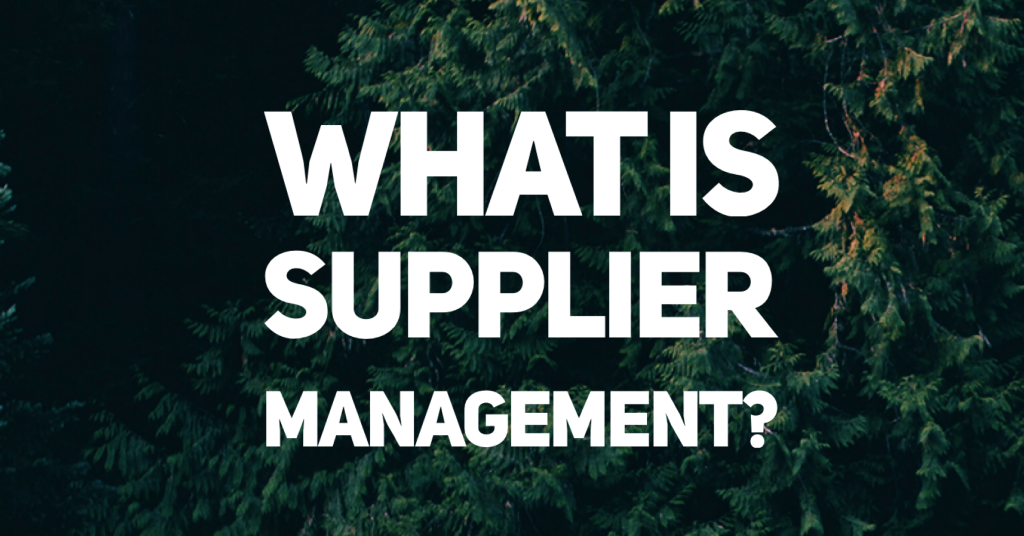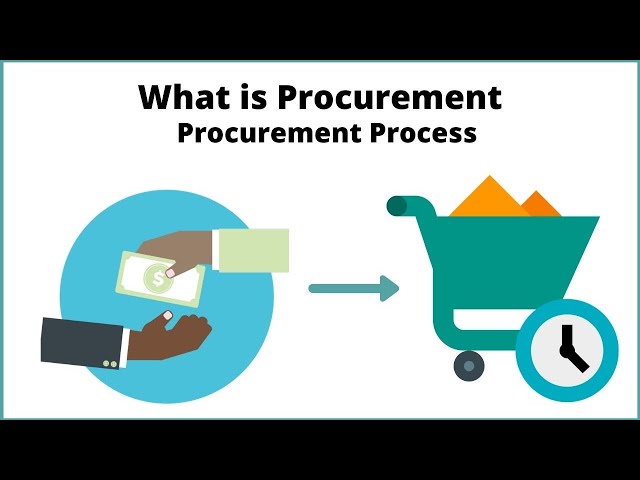What is Supplier Management?
Supplier management is the process of managing the relationships between a company and its suppliers. It involves the selection, evaluation, and monitoring of suppliers to ensure that they are meeting the company’s needs in terms of quality, cost, delivery, and service.
Effective supplier management can help a company to:
- Source goods and services in a cost-effective manner
- Ensure the timely delivery of goods and services
- Maintain high levels of quality
- Minimize the risk of supplier-related problems
- Enhance the company’s reputation and competitiveness
To manage its suppliers effectively, a company may need to implement a variety of strategies and processes, such as:
- Developing a supplier evaluation and selection process
- Setting up a system for monitoring and measuring supplier performance
- Establishing clear communication channels with suppliers
- Negotiating contracts with suppliers
- Implementing a process for resolving disputes or issues with suppliers
- Developing a long-term strategy for managing the company’s relationships with suppliers
Supplier Management Process
The supplier management process is a set of activities that a company uses to manage its relationships with its suppliers. The specific steps in the process may vary depending on the needs and goals of the company, but generally, the process involves the following stages:
- Identify needs: The first step in the supplier management process is to identify the goods or services that you need from suppliers. This may involve conducting a needs assessment to determine what you need, how much you need, and when you need it.
- Source potential suppliers: Once you have identified your needs, you can begin the process of identifying potential suppliers. This may involve conducting online research, asking for referrals from other businesses, or attending industry events or trade shows.
- Evaluate potential suppliers: Once you have identified a list of potential suppliers, you can evaluate them based on various criteria, such as price, quality, delivery times, and reliability. You may request bids or proposals from each supplier to help you make your decision.
- Select a supplier: Based on your evaluation, you can select the supplier that best meets your needs. You may negotiate further with the selected supplier to finalize the terms of the relationship.
- Set up a system for monitoring and measuring supplier performance: Once you have selected a supplier, it is important to set up a system for monitoring and measuring their performance. This may include setting up regular meetings or check-ins, establishing performance metrics and targets, and creating a system for resolving any issues or disputes that may arise.
- Review and update the supplier management process: It is important to periodically review and update your supplier management process to ensure that it is meeting the needs of your company and your suppliers. This may involve making changes to the process, such as updating the criteria for evaluating potential suppliers or revising the performance metrics that you use to monitor supplier performance.
Maintain a Strong Supply Base
Here are some strategies that a company can use to maintain a good supply base:
- Establish clear communication channels with suppliers: It is important to establish clear communication channels with suppliers to ensure that everyone is on the same page. This may involve setting up regular meetings or check-ins, or using a project management tool to stay informed about the status of orders and any issues that may arise.
- Negotiate long-term contracts: A long-term contract can help to establish a stable, mutually beneficial relationship with a supplier. This may involve negotiating terms such as volume discounts, preferential treatment, or priority access to new products or services.
- Develop a supplier evaluation and selection process: Having a formal process in place for evaluating and selecting suppliers can help a company to choose suppliers who are reliable, cost-effective, and meet its quality standards.
- Set up a system for monitoring and measuring supplier performance: A system for monitoring and measuring supplier performance can help a company to identify areas where a supplier may be excelling or underperforming. This may involve setting up performance metrics and targets, and establishing a process for resolving any issues or disputes that may arise.
- Foster a culture of continuous improvement: Encouraging a culture of continuous improvement within the company can help to improve supplier relationships. This may involve working with suppliers to identify and implement best practices or finding ways to streamline processes to make them more efficient.
Steps to Develop a Supplier Evaluation and Selection Process
- Identify your needs: Determine what goods or services you need from suppliers, and define the criteria that are important for evaluating potential suppliers. This may include factors such as price, quality, delivery times, flexibility, and reliability.
- Create a list of potential suppliers: Identify a list of potential suppliers who may be able to meet your needs. You can use various methods to find potential suppliers, such as conducting online research, asking for referrals from other businesses, or attending industry events or trade shows.
- Request bids or proposals: Contact the potential suppliers and ask them to submit a bid or proposal that outlines how they can meet your needs. This will allow you to compare the different options and assess the costs and benefits of each supplier.
- Evaluate the bids or proposals: Review the bids or proposals from each potential supplier, taking into account the criteria that you have identified as important. Consider factors such as price, quality, delivery times, and any additional services that the supplier may offer.
- Select the best supplier: Based on your evaluation, select the supplier that best meets your needs. You may choose to negotiate further with the selected supplier to finalize the terms of the relationship.
- Set up a system for monitoring and measuring supplier performance: Once you have selected a supplier, it is important to set up a system for monitoring and measuring their performance. This may include setting up regular meetings or check-ins, establishing performance metrics and targets, and creating a system for resolving any issues or disputes that may arise.
Measuring Supplier Performance
There are several ways that a company can measure the performance of its suppliers. Some common methods include:
- Key performance indicators (KPIs): A company can establish specific performance metrics or key performance indicators (KPIs) to measure the performance of its suppliers. These may include metrics such as on-time delivery rate, order accuracy, or product quality.
- Supplier scorecards: A company can create a supplier scorecard that compares the performance of its suppliers based on various metrics. The scorecard may include data on factors such as price, quality, delivery times, and responsiveness to customer needs.
- Surveys and questionnaires: A company can use surveys or questionnaires to gather feedback from employees or customers about the performance of its suppliers. This can help the company to identify areas where the supplier may be excelling or areas where there is room for improvement.
- Regular meetings and check-ins: A company can schedule regular meetings or check-ins with its suppliers to discuss their performance and identify any issues or concerns. This can help to build a strong, collaborative relationship and ensure that the supplier is meeting the company’s needs.
- Benchmarking: A company can compare the performance of its suppliers to industry benchmarks or best practices to see how they compare to other companies in the same industry. This can help the company to identify areas where its suppliers may be outperforming or underperforming relative to their peers.
Supplier Optimization
Supplier optimization is the process of identifying and implementing strategies to optimize the performance of your company’s suppliers. Here are some steps that you can follow to perform supplier optimization:
- Identify areas for improvement: Identify areas where your company’s suppliers may be underperforming or where there may be opportunities for improvement. This may involve reviewing data on factors such as price, quality, delivery times, and reliability.
- Engage with suppliers: Engage with your suppliers to identify the root causes of any performance issues and discuss potential solutions. This may involve setting up regular meetings or check-ins, or using a project management tool to track progress.
- Set specific goals and targets: Set specific goals and targets for supplier performance, and work with your suppliers to develop action plans to achieve those goals.
- Provide training and support: Consider providing training or support to your suppliers to help them improve their performance. This may involve providing access to resources or expertise, or offering support in areas such as quality control or process improvement.
- Monitor and measure performance: Set up a system for monitoring and measuring supplier performance to track progress towards your goals. This may involve establishing performance metrics and targets, and creating a process for resolving any issues or disputes that may arise.
- Review and adjust your strategy: Periodically review your supplier optimization strategy to ensure that it is meeting your company’s needs and the needs of your suppliers. This may involve making adjustments to your strategy, such as updating the performance metrics or targets that you are using, or revising the action plans that you have in place.
Types of Supplier Relationships
There are several different types of supplier relationships that a company can have with its suppliers. Some of the most common types of supplier relationships include:
- Strategic partnerships: A strategic partnership involves a close, long-term relationship between a company and its supplier. The supplier may work closely with the company to develop new products or services, and the company may provide preferential treatment to the supplier in terms of purchasing decisions.
- Preferred supplier relationships: A preferred supplier relationship involves a company giving priority to a specific supplier when making purchasing decisions. The supplier may offer a higher level of quality or service, or may offer more favorable terms than other suppliers.
- Transactional relationships: A transactional relationship is a more formal, short-term relationship between a company and its supplier. The supplier provides goods or services on a one-time or infrequent basis, and the company pays for those goods or services at the time of purchase.
- Virtual relationships: A virtual relationship involves a company outsourcing certain tasks or functions to a supplier who works remotely or remotely. This type of relationship may involve the use of technology, such as cloud-based software or project management tools, to facilitate communication and collaboration.
- Global relationships: A global relationship involves a company working with suppliers from different countries around the world. This type of relationship may involve cultural differences and language barriers, and may require the use of specialized tools and processes to manage communication and collaboration effectively.
Tips to Effectively Negotiate with Suppliers
- Do your homework: Before you start negotiating with a supplier, make sure you have a clear understanding of your needs and what you are looking for in a supplier. This includes having a good idea of the price range you are willing to pay, the level of quality you require, and the terms and conditions that you are willing to accept.
- Know your leverage: Consider what you have to offer the supplier, such as a long-term relationship, a high volume of orders, or the ability to refer other business to the supplier. Knowing your leverage can help you to negotiate more effectively.
- Build a relationship: Building a strong, trusting relationship with a supplier can make negotiations more productive and successful. This may involve showing genuine interest in the supplier’s business and taking the time to get to know them.
- Focus on win-win solutions: Try to find mutually beneficial solutions that meet the needs of both you and the supplier. This may involve finding ways to compromise on certain issues or finding creative solutions that meet the needs of both parties.
- Be flexible: Be open to negotiating different terms or conditions that may be more favorable to the supplier, as long as they still meet your needs. This may involve being open to different payment terms, delivery schedules, or other aspects of the relationship.
- Use power wisely: Use your leverage wisely, but avoid using threats or intimidation to get what you want. This can damage the relationship and may not lead to a successful outcome.
Procurement Process
The procurement process refers to the series of steps that a company takes to acquire goods or services from external suppliers. The specific steps in the procurement process may vary depending on the company’s needs and policies, but generally, it involves the following stages:
- Identify needs: The first step in the procurement process is to identify the goods or services that the company needs. This may involve conducting a needs assessment to determine what is needed, how much is needed, and when it is needed.
- Source potential suppliers: Once the company has identified its needs, it can begin the process of identifying potential suppliers. This may involve conducting online research, asking for referrals from other businesses, or attending industry events or trade shows.
- Evaluate potential suppliers: The company can evaluate potential suppliers based on various criteria, such as price, quality, delivery times, and reliability. The company may request bids or proposals from each supplier to help it make its decision.
- Select a supplier: Based on its evaluation, the company can select the supplier that best meets its needs. The company may negotiate further with the selected supplier to finalize the terms of the relationship.
- Place the order: Once a supplier has been selected, the company can place an order for the goods or services that it needs. The order may include details such as the quantity of goods or services needed, the delivery schedule, and the payment terms.
- Receive and review the goods or services: The company should review the goods or services when they are received to ensure that they meet the specified requirements. Any issues or concerns should be addressed with the supplier.
- Pay for the goods or services: The company will need to pay for the goods or services according to the agreed-upon terms. This may involve issuing a payment, such as a check or electronic transfer, to the supplier.
Culture of Continuous Improvement With Suppliers
Here are some strategies that a company can use to create a culture of continuous improvement with its suppliers:
- Communicate openly and transparently: Encourage open communication with suppliers and be transparent about your expectations and needs. This can help to build trust and create a collaborative relationship.
- Encourage feedback and suggestions: Invite suppliers to provide feedback and suggestions on how to improve processes or products. This can help to identify areas where there may be opportunities for improvement.
- Set specific goals and targets: Set specific goals and targets for supplier performance, and provide feedback on progress towards those goals. This can help to encourage continuous improvement and drive progress.
- Provide training and support: Consider providing training or support to suppliers to help them improve their performance. This may involve providing access to resources or expertise, or offering support in areas such as quality control or process improvement.
- Establish a process for resolving issues: Set up a process for addressing any issues or disputes that may arise with suppliers. This may involve establishing clear communication channels, setting up regular check-ins, or creating a system for resolving disputes or conflicts.
- Recognize and reward good performance: Recognize and reward suppliers who are meeting or exceeding your expectations. This can help to encourage continuous improvement and build strong, long-term relationships.
Questions to Consider to Ensure a Person Understands Supplier Management. (Also good for interview questions)
- How do you go about selecting and evaluating potential suppliers?
- Can you provide an example of a successful negotiation with a supplier?
- How do you maintain strong relationships with suppliers?
- How do you handle disputes or issues with suppliers?
- How do you ensure that your company is getting the best value from its suppliers?
- Can you describe a time when you had to manage a difficult supplier relationship?
- How do you stay up-to-date on industry trends and developments related to supplier management?
- How do you ensure that your company’s needs are being met by its suppliers?
- How do you approach continuous improvement with your suppliers?
Supplier Management Resources
What is Procurement? | Procurement Process.
Tips to Negotiate Lower Real Estate Commission.
NAR Settlement Real Estate Changes.
Train by Primary SCM Process
- Plan it: What is Supply Chain Planning and Strategy?
- Buy it: What is Supplier Management and Procurement?
- Store it: What is Distribution, Warehouse and Inventory Management?
- Make it: What is Manufacturing?
- Ship it: What is Transportation, Logistics and Shipping?
- Return it: What is Return and Reverse Logistics?



